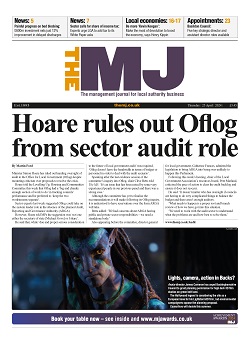As disasters caused by natural hazards become more frequent across the globe, disaster risk resilience (DRR) and response are becoming an integral consideration for all DRR practitioners, especially those working at a local level.
Lloyd’s Register Foundation recently released a report titled Focus On: Critical infrastructure resilience and perceptions of disaster preparedness. Data for the report comes from the Foundation’s Work Risk Poll, for which 125,000 people across 121 counties were interviewed by Gallup to gather insight on their perceptions and experiences.
The results show that globally, more people think their national government is better prepared than their local government to deal with a future disaster (51% to 48% – a three percentage point difference).
Furthermore, a loss of access to critical infrastructure impacts perceptions of local government preparedness more than that of national governments. For example, among those who experienced a disaster in the previous five years and lost access to clean water supplies, the gap between confidence in national and local government preparedness widened to seven percentage points.
Closer to home, while the UK is generally in line with global findings, it bucks the trend for the rest of northern Europe. Indeed, the UK is the only country in the region to view national government more positively than local government when it comes to disaster prevention. Overall, 44% of UK respondents have confidence in their national government compared with 42% for local government.
At first glance, this may not raise alarm bells for many people, but ensuring DRR and enhancing the capacity of local level practitioners is critical to building trust in local government by improving resilience around the world. After all, local authorities are the building blocks of the response to and recovery from an emergency of any scale.
Why we need to leverage local capacity
Local emergency managers are uniquely positioned to prepare for, mitigate, respond to, and recover from emergencies and disasters. After emergency services, local government is generally the first public entity to respond to an emergency or disaster. Most emergencies will be addressed at the local levels only by emergency services, local authorities, utility companies and other stakeholders.
In addition to authority, local practitioners have unparalleled knowledge of local hazards, vulnerabilities, capabilities, and limitations. However, local authorities may lack the resources and technical subject-matter expertise to address other challenges, such as the needs for rapid organisational change, resource sharing, participation of organisations that do not usually respond to disasters, and overlapping responsibilities.
Putting theory into practice
At the start of 2024, Storm Henk hit parts of the UK causing severe travel disruption and damaging 1,800 homes. The UK Government, led by Prime Minister Rishi Sunak, has since defended its response to the floods in the media, stating that £5.2bn had been spent on flood defences which resulted in 49,000 homes being protected.
While large statistics and figures like these grab the attention of the public, community efforts are always tangibly felt first in a disaster.
For example, reparative and responsive measures were in full force in local communities with residents being rescued from their homes in boats by emergency services and community responders. Teams of voluntary groups came together in local communities, including Bedfordshire, to provide support to residents in some of the worst hit areas.
The immediacy and community focus of these local response efforts highlights why communities should be involved in local resilience efforts, such as putting together the Community Risk Register, creating an all-hazards Emergency Operations Plan, and conducting exercises. Here, ‘local communities’ means individuals and families, including those with special needs, businesses, faith-based organisations, non-profit groups, schools and media outlets. The role and responsibilities of all these groups, should also be reflected in the content of risk assessments, emergency plans and exercises.
Short-term tangible changes
Local governments have a range of powers that allow them to control growth and development in ways that can decrease the risk from natural hazards, adapt to climate change and establish policies to increase overall resilience. They play a key role in emergency management by developing the necessary policies and concrete procedures for responding effectively to community emergencies and their aftermath. However, no matter the local hazards or the level of resources available, the capacity of the community to tackle these challenges depends on a certain level of political willpower. It is critical to have a champion, or visionary figure who is willing to take a stand on issues that may be politically contentious, such as climate change adaptation or land use regulation.
With political support, the single most important action local government can take is to empower local resilience forums to take forward the community’s emergency management programme.
Empowering in this sense means providing political support for this collaborative team to lead across organisational silos and build the unity of effort needed to address disasters.
Local Resilience Forums are organisations that have all it takes to break down obstacles to collaboration that are often the result of narrow leadership focus on the interests and needs of individual silos of activity. Those leaders must be given a sufficiently wide berth to leverage their organisations’ assets, information, and capacities, a particularly critical function for organisations with emergency preparedness responsibilities that are constrained by ingrained bureaucratic patterns of behaviour.
The next edition of the Lloyd’s Register Foundation World Risk Poll is due to be launched later this year, and may coincide with a General Election in the UK. With the new results from the next World Risk Poll set to show how opinions may have changed based on recent disaster experiences, it will be a pivotal time for government leaders to enact tangible change to empower local practitioners.
George Karagiannis is risk and resilience programme director at global convening organisation Resilience Rising
X – resilience_rise
• For more information about the Lloyd’s Register Foundation World Risk Poll visit: lrfworldriskpoll.com
• For more information about Resilience Rising visit: resiliencerisingglobal.org/



